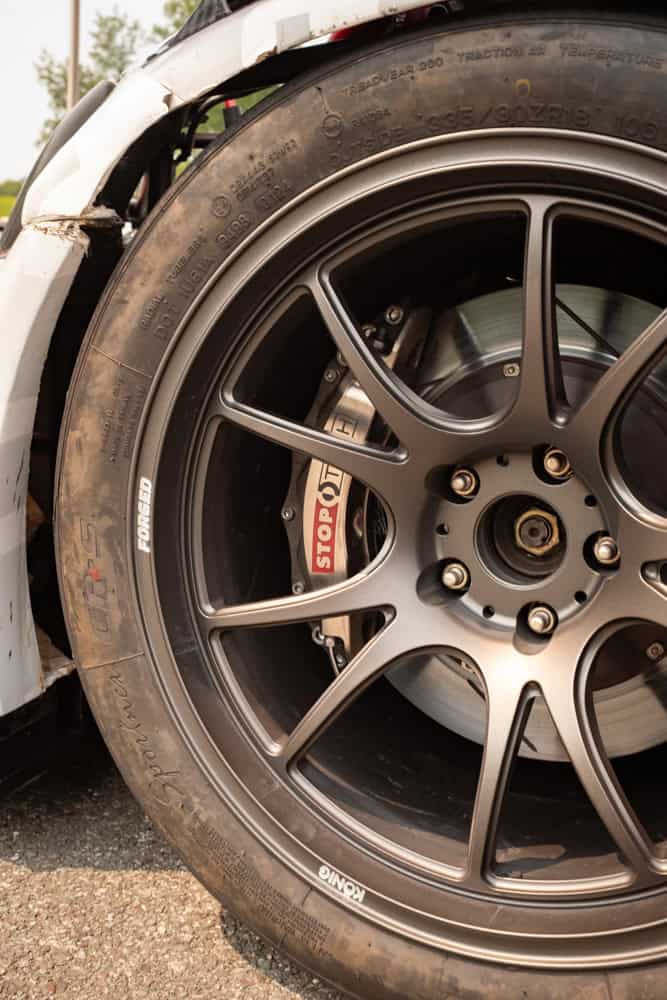Mastering Wheel Fitment for Your Infiniti Q50
In the realm of luxury sedans, the Infiniti Q50 stands as a testament to innovation and performance. Born from a rich heritage that began in 1985 with Nissan’s vision to elevate luxury, the Q50 has evolved into a masterpiece of engineering and design. Today, we delve into the art of wheel fitment for the Infiniti Q50, guiding you through the optimal choices to enhance both aesthetics and performance.
A Legacy of Luxury and Performance
The journey of the Infiniti brand started when Nissan set out to create a new upscale identity tailored for the American market. This ambition led to the formation of the Horizon Task Force—a dedicated team of executives from design, engineering, and sales. Their mission was clear: to craft a luxury brand that could rival German counterparts while building upon Nissan’s strong reputation in the United States.
Fast forward to the late 1990s, Infiniti had cemented its place with models like the G35 sedan, known for performance and reliability. In 2013, the G37 received a transformative refresh, emerging as the Infiniti Q50. Debuting with a more aggressive exterior and a suite of advanced features, the Q50 has since become a favorite among enthusiasts and luxury car aficionados alike.
The Importance of Proper Wheel Fitment
Upgrading your Q50’s wheels is more than an aesthetic enhancement; it’s about optimizing performance and ensuring safety. Maintaining the overall rolling diameter is crucial when altering wheel and tire sizes. This means the height of the tire from top to bottom should remain consistent to prevent any impact on speedometer readings, ABS functionality, or transmission shifts.
Fitment Categories for the Infiniti Q50
At Konig Wheels, we categorize wheel fitments into four distinct groups to help you find the perfect match for your Q50:
1. No Hassle
Ideal For: Drivers seeking a straightforward upgrade without altering the vehicle’s dynamics.
Recommendation: Opt for wheels with a width ranging from 8 to 8.5 inches and an offset between +30 and +35. This setup retains factory tire sizing while offering a more flush look compared to the stock fitment.
Suggested Size: An 18×8.5 wheel with a +30 offset provides a perfect balance of style and simplicity.
2. Slight Flex
Ideal For: Enthusiasts looking to make a subtle yet noticeable enhancement, willing to adjust both wheel and tire sizes.
Considerations: Minor suspension tweaks may be necessary, especially if choosing tires with a beefier sidewall.
Recommendation: Front wheels between 8.5 to 9.5 inches wide with an offset of +32 to +35. For the rear, a width of 9.5 inches with a +35 offset works well.
Suggested Setup: A square setup is recommended, particularly for all-wheel-drive models. Go for 18 or 19-inch diameter wheels, 9.5 inches wide, with a +35 offset.
3. All the Wheel
Ideal For: Drivers ready to make a bold statement with an aggressive stance.
Considerations: This fitment will result in some wheel poke, which may be exactly the look you’re aiming for.
Recommendation: For the front, choose wheels 8.5 to 9.5 inches wide with a +35 offset. In the rear, opt for 9.5 to 10.5 inches wide with an offset between +20 and +25.
Suggested Setup: A staggered arrangement with 9.5-inch wide front wheels and 10.5-inch wide rear wheels, both with a +25 offset.
4. You’re On Your Own
Ideal For: The adventurous modifier who doesn’t shy away from extensive customization.
Considerations: Exceeding the above recommendations will require significant modifications, such as suspension overhauls or fender rolling, to prevent rubbing and ensure proper function.
Warning: Proceeding beyond a 9.5-inch width with a +25 offset in the front or a 10.5-inch width with a +25 offset in the rear is uncharted territory and may impact vehicle safety and performance.
Final Thoughts
The Infiniti Q50’s versatility allows for a wide range of wheel sizes—from the factory standard 7.5-inch width up to an impressive 10.5 inches in the rear. Whether you’re aiming for a subtle upgrade or an aggressive transformation, understanding the nuances of wheel fitment is key to achieving your desired outcome.
At Konig Wheels, we’re here to assist you in finding the perfect wheels that match your style and performance needs. If you have any questions about the fitments discussed or need personalized advice, don’t hesitate to reach out to us at fitment@konigwheels.com.
Elevate your Infiniti Q50 experience with wheels that not only turn heads but also enhance every drive.

